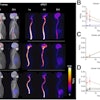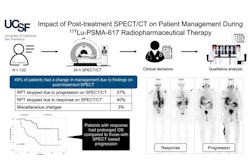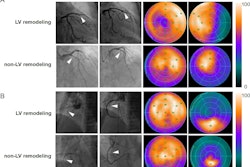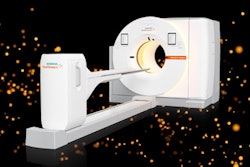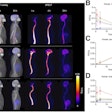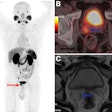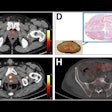Fibroblast activation protein inhibitor (FAPI) SPECT/CT is comparable to FDG-PET/CT in detecting primary lesions and lymph node metastases in patients with gastrointestinal tumors, researchers have reported.
The finding is from a prospective head-to-head study in China and suggests that SPECT/CT could play a significant role in managing patients with the disease, noted first author Yu Zhang, MD, of Fujian Provincial Hospital in Fuzhou, and colleagues.
“Because of its low cost, SPECT/CT using technetium-99m (Tc-99m) is widely available. Tc-99m FAPI offer attractive options for imaging in clinical situations where PET imaging is not accessible or is limited,” the group wrote. The study was published May 14 in Scientific Reports.
Early diagnosis and accurate staging are crucial in determining appropriate treatments for patients with colorectal and gastric cancers, two types of gastrointestinal cancer with low five-year survival rates, the authors explained.
While PET generally provides superior spatial resolution and sensitivity compared to SPECT, FAPI radiotracers have been shown to be more accurate than FDG for detecting peritoneal metastases, they added.
Thus, in this study, the researchers explored whether the higher accuracy of Tc-99m FAPI tracer could compensate for the lack of spatial resolution and sensitivity in SPECT.
The group enrolled 78 participants with pathologically confirmed gastrointestinal cancer between September 2022 and June 2024. Thirty-three patients presented with primary tumors for staging and 45 patients with recurrent disease for restaging after surgery. The patients underwent F-18 FDG-PET/CT and Tc-99m FAPI-SPECT/CT between one and seven days apart.
 Representative F-18 FDG-PET/CT and Tc-99m FAPI-SPECT/CT scans for five study patients with gastrointestinal cancer. FDG-PET/CT and FAPI-SPECT/CT images show that uptake occurred in metastatic lymph nodes (LNs) (patient number 50, D) and bone metastases (patient number 33, C). FAPI-SPECT/CT outperformed FDG-PET/CT in detecting liver metastases (patient number 3, A; and 15,B) and peritoneal spread metastases (patient number 27, E). Red arrows indicate foci additionally found by FAPI-SPECT/CT.Scientific Reports
Representative F-18 FDG-PET/CT and Tc-99m FAPI-SPECT/CT scans for five study patients with gastrointestinal cancer. FDG-PET/CT and FAPI-SPECT/CT images show that uptake occurred in metastatic lymph nodes (LNs) (patient number 50, D) and bone metastases (patient number 33, C). FAPI-SPECT/CT outperformed FDG-PET/CT in detecting liver metastases (patient number 3, A; and 15,B) and peritoneal spread metastases (patient number 27, E). Red arrows indicate foci additionally found by FAPI-SPECT/CT.Scientific Reports
According to the analysis, the accuracy of Tc-99m FAPI-SPECT/CT and F-18 FDG-PET/CT for diagnosing primary tumors and lymph node metastases were similar. However, for detecting the degree of peritonea spread, Tc-99m FAPI-SPECT/CT had a greater sensitivity (100% versus 20%), accuracy (100% versus 75%), and negative predictive value (100% versus 69%), the authors reported.
“To our knowledge, this is the first clinical experience with head-to-head comparison of Tc-99m FAPI-SPECT/CT and F-18 FDG-PET/CT in digestive system cancers,” the group wrote.
Ultimately, given the cost-effectiveness and availability of SPECT compared to PET, the authors suggested that specific patient subgroups may benefit more Tc-99m FAPI-SPECT/CT: patients with limited economic conditions or relatively scarce medical resources in their area or patients with peritoneal metastases, for instance.
“In conclusion, Tc-99m FAPI-SPECT/CT was found to be comparable to F-18 FDG-PET/CT in detecting primary lesions and lymph node metastases in patients with gastrointestinal tumors. Moreover, Tc-99m FAPI-SPECT/CT demonstrated superior performance over F-18 FDG-PET/CT in detecting peritoneal involvement,” the group wrote.
The full study is available here.




